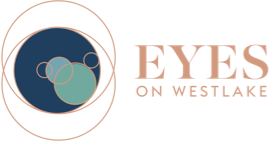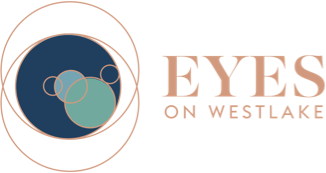If you’ve ever needed to squint to see something, it could be a sign of a refractive error. These are common vision problems affecting how your eyes refract light. If you’re living with a refractive error, you likely need contact lenses or eyeglasses to correct your vision. There are several types of refractive errors, with the most common being myopia (nearsightedness) and hyperopia (farsightedness). So what’s the difference between these?
Both conditions impact your vision differently. Nearsightedness makes distant objects blurrier, while farsightedness makes nearby objects blurrier. Then, there’s a specific condition called anisometropia, where both myopia and hyperopia are at play, that can be more complex.
What Are Refractive Errors?
Your ability to see clearly depends on how well your eyes focus light onto your retina. This involves the cornea and lens working together to refract, or bend, light to the correct focal point.
It’s like a camera lens—the light focuses and creates a clear image. But sometimes, the eye grows in ways that throw off this balance. The result is a refractive error, where light doesn’t focus properly on the retina.
Blurry vision, whether near or far, is the most common sign of a refractive error. The eye can’t create a clear image, and the eye struggles to focus.
What Is Myopia?
Myopia, or nearsightedness, affects how well you see objects that are far away. This develops when the eye grows too long or the cornea becomes too steep. This causes light to focus in front of the retina rather than directly on it.
This condition commonly develops during childhood. It’s recognizable by:
- Squinting to see distant objects
- Difficulty seeing things at a distance
- Holding books or devices very close to the face
- Frequent eye strain or headaches
Fortunately, glasses and contact lenses can easily treat myopia.
Why Early Detection of Myopia Matters
Myopia isn’t just a short-term problem. Because it develops as a result of the eye growing too long, extreme cases can put additional strain on a child’s eyes. This then increases the risk of long-term vision problems and structural damage to the eye.
This is where myopia control shines. This is a group of strategies designed to slow how far myopia progresses. These treatments are noninvasive and simple, and they offer an effective way to preserve more of a child’s future vision.
What Is Hyperopia?
Hyperopia, or farsightedness, is slightly different. Instead of blurring distant objects, it makes nearby objects harder to see. Hyperopia occurs when the eye is shorter than normal or when the cornea is relatively flat.
While those with hyperopia may still see distant objects clearly, they strain their eyes when trying to focus on something nearby. This can make everyday tasks more of a challenge, especially activities like reading and writing.
With hyperopia, kids might develop vision-related learning difficulties or even avoid prolonged focus activities altogether. However, corrective lenses can bring things into focus, making daily tasks much simpler.

What Is Anisometropia?
An eye can’t be both nearsighted and farsighted. But sometimes, eyes develop incorrectly over the years. One eye could grow too long while the other grows too wide, leading to blurry vision at almost every distance. This is called “anisometropia.”
Anisometropia is much less common. However, it causes an imbalance and creates significant challenges for the brain. You may struggle to understand what you’re seeing, as the brain is receiving two different images.
Types of Anisometropia
Anisometropia takes 3 different forms, depending on the differences between the two eyes.
- Simple anisometropia: One eye sees clearly, while the other has a refractive error.
- Compound anisometropia: Both eyes have the same type of refractive error, but one is worse.
- Mixed anisometropia: One eye is nearsighted, and the other is farsighted.
While myopia and hyperopia can’t occur in the same eye, they can affect a person at the same time. This then leads to everyday vision challenges, which quickly affect quality of life.
How Is Anisometropia Diagnosed?
Spotting the signs of anisometropia—and any other refractive error—is essential for early treatment. Regular eye exams are key for children, as they make it significantly easier to catch potential problems.
So how can you tell if your child has vision problems? Watch for signs such as:
- Complaints of frequent headaches or eye strain after activities like reading.
- Squinting, tilting, or turning the head to rely more heavily on one eye.
- Blurred or double vision that seems persistent.
- Rubbing or closing one eye while trying to see better.
- Difficulty focusing on tasks or complaints of uneven vision between the eyes.
If you recognize these signs, it’s time to visit an optometrist.
Take Control of Your Eye Health Today
Something as simple as the shape of your eye can make a big difference in your vision. However, there is good news! Nearsightedness, farsightedness, and conditions like anisometropia are all manageable with the right care.
If you’re dealing with any unusual vision problem, come visit our team at Eyes on Westlake. We’ll work closely with you to keep your vision in excellent shape. You deserve clarity, so book an appointment with our team today!




